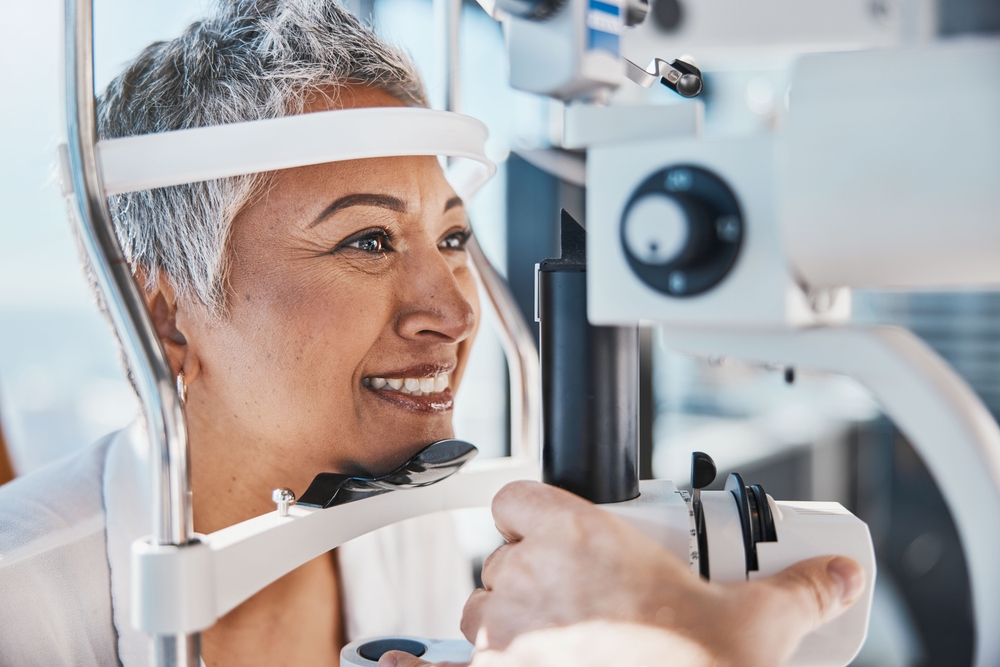
Diabetic retinopathy, is a serious sight-threatening complication of diabetes that affects the retina - the light-sensitive tissue at the back of the eye. It can develop in anyone who has type 1 or type 2 diabetes. The longer a person has diabetes, and the less controlled their blood sugar is, the more likely they are to develop this eye complication.
For those unfamiliar with diabetic retinopathy, it might sound intimidating. However, understanding this condition is the first step towards managing it effectively. Knowledge is power, and in this case, it can be the key to preserving your vision.
Causes and Symptoms of Diabetic Retinopathy
The primary cause of diabetic retinopathy is diabetes itself. Over time, high blood sugar levels from diabetes can lead to damage in the tiny blood vessels that nourish the retina, leading to diabetic retinopathy. The damaged blood vessels can swell, leak, or close, preventing blood from passing through. As a result, the retina is deprived of the nutrients it needs to function, leading to vision problems.
Diabetic retinopathy often starts without any noticeable symptoms. This is why it’s often referred to as a 'silent' disease. It's not until the condition has advanced that symptoms start to become apparent. These symptoms can include blurred vision, floaters, difficulty seeing at night, and even sudden loss of vision.
Sometimes, the symptoms of diabetic retinopathy can come and go, which can make it difficult for a person to realize that they are dealing with a serious eye condition. It's not uncommon for people to dismiss the early signs of diabetic retinopathy as simply being tired or needing new glasses. However, if left untreated, diabetic retinopathy can lead to blindness.
Understanding the Stages of Diabetic Retinopathy
Diabetic retinopathy progresses in stages, each one more severe than the last. Understanding these stages can help you better manage the condition and take the necessary steps to protect your eyes.
In the early stage, known as non-proliferative diabetic retinopathy (NPDR), tiny blood vessels within the retina leak blood or fluid. This leakage causes the retina to swell or form deposits known as exudates. Many people with diabetes have mild NPDR, which usually does not affect their vision.
If left untreated, however, NPDR can progress to advanced or proliferative diabetic retinopathy (PDR). In PDR, circulation problems cause the retina to become oxygen deprived. As a result, new fragile blood vessels can begin to grow in the retina and into the vitreous, the gel-like substance that fills the back of the eye. Unfortunately, these new blood vessels are abnormal and do not provide proper blood flow to the retina. Moreover, they can leak and cause scar tissue to form on the retina. Both the new blood vessels and the scar tissue can lead to serious vision loss and even blindness.
How Diabetic Retinopathy Affects Your Eyes
The impact of diabetic retinopathy on your eyes can be profound. As the condition progresses, it can cause a range of vision problems, from mild vision loss to complete blindness. This is because the retina, which is responsible for converting light into signals that are sent to your brain, is gradually damaged by the disease.
One of the main ways that diabetic retinopathy affects your eyes is by causing blood vessels in the retina to leak fluid or bleed. This leads to the retina swelling, which can blur your vision. In some cases, it can also cause floaters - spots or dark strings that float in your field of vision.
If diabetic retinopathy progresses to its more advanced stages, it can lead to the growth of abnormal new blood vessels on the retina. These new vessels can bleed into the vitreous, causing severe vision loss or even blindness.
The Importance of Regular Eye Exams
One of the most crucial aspects of managing diabetic retinopathy is early detection. This is where regular eye exams come into play. During an eye exam, an eye care professional can look for signs of diabetic retinopathy and other eye conditions.
Most people with diabetes should have a comprehensive dilated eye exam at least once a year. However, if you have been diagnosed with diabetic retinopathy, you may need eye exams more often. Your eye care professional will recommend a schedule that's right for you.
Eye exams can detect diabetic retinopathy before you even start to notice any symptoms. This is vital because early treatment can stop the disease from progressing and prevent vision loss.
How to Protect Your Eyes and Prevent Diabetic Retinopathy
The best way to protect your eyes from diabetic retinopathy is to manage your diabetes effectively. This means monitoring your blood sugar levels regularly, taking your medication as prescribed, eating a healthy diet, exercising regularly, and avoiding smoking.
It's also important to have regular eye exams. As mentioned, early detection and treatment can stop diabetic retinopathy from progressing and prevent vision loss. Do not wait for symptoms to appear. Regular eye exams are a must.
Finally, if you've been diagnosed with diabetic retinopathy, follow your eye care professional's advice for managing the condition. This may include taking medication, having laser treatment, or undergoing surgery.
Lifestyle Changes to Manage Diabetic Retinopathy
Making lifestyle changes can significantly help manage and prevent diabetic retinopathy. These changes mainly revolve around managing your blood sugar levels, as this is the key to preventing the damage that leads to diabetic retinopathy.
A healthy diet is crucial in managing blood sugar levels. This means eating a variety of foods in the right proportions, focusing on whole grains, lean proteins, fruits and vegetables, and limiting processed foods and sugary drinks.
Regular physical activity is also essential. Exercise helps your body use insulin more effectively, which can help control your blood sugar levels. It also helps to lower blood pressure and cholesterol, which are risk factors for diabetic retinopathy.
Finally, if you smoke, consider quitting. Smoking increases your risk of various diabetes complications, including diabetic retinopathy. If you're having trouble quitting, don't hesitate to seek help. There are many resources available to help you quit smoking.
The Importance of Eye Health
Maintaining eye health is a crucial aspect of managing diabetes. Diabetic retinopathy is a serious complication of diabetes that can lead to vision loss or even blindness if not properly managed.
Protecting your eyes should be a priority. If you have diabetes, don't take your vision for granted. Be proactive in managing your diabetes and preserving your eye health.
For more information on diabetic retinopathy and how to protect your eyes, contact Partners Pacific Optometry at our office in Fountain Valley, California. Call (714) 965-5130 to discuss any questions with our team of experts or to schedule an appointment today.










